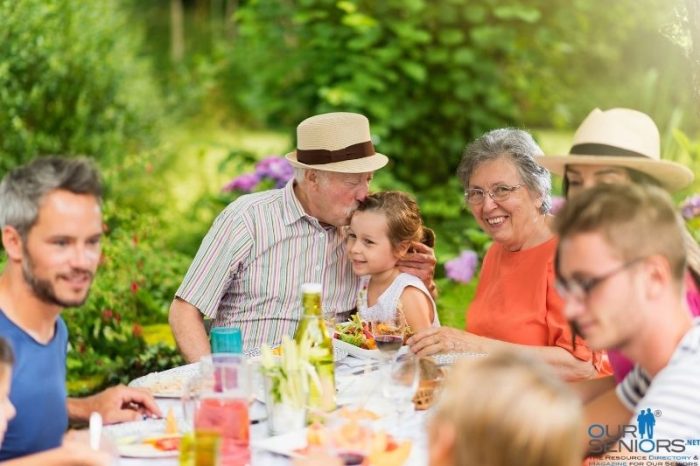In the early weeks of the Covid-19 pandemic, there was a lot of conflicting information that created a lot of confusion about safety. Many people know about the benefits of spending time outdoors, but there was a sudden urgency from warnings suggesting that people should stay indoors for safety. As the months passed, we learned precisely how to change habits to stay safe and help stop the spread of the disease which quickly impacted thousands of Americans.
Nearly two years since the pandemic arrived in the U.S., people are returning to normalcy. However, there are still numerous questions about phasing in specific activities such as visiting relatives and friends. We will address some of those questions here.
According to the Centers for the Diseases Control and Prevention (CDC), it’s okay for people that are fully vaccinated to return to do most of the activities they were not able to do at the height of the pandemic. This includes visiting friends and family. But many seniors still have concerns considering Covid-19 posed greater risks for people in this age group.
Everyone is considered fully vaccinated two weeks after getting a second dose of the Covid-19 vaccine (mRNA vaccine). Fully vaccinated people are allowed to gather in private and public settings without having to wear a mask and do not need to practice social distancing contingent upon local laws and ordinances.
Five Simple Steps to Phase-In Safe Visits
- Communicate With One Another
Before visiting with family and friends or having them visit you, be sure to communicate with one another about health situations. Being open about symptoms related to Covid-19 or other medical conditions beforehand is a great way to understand the kind of risks you may be taking or placing on others. There is no shame in keeping others aware of one’s situation (e.g., vaccinated or non-vaccinated) before planning a visit. Communication is a key to the nation’s return to normalcy.
- Check the Area’s Health Status
Common sense suggests that urban areas will be dealing with more Covid-19 cases than rural areas. But you shouldn’t assume that if you are traveling to or living in a rural area you are at a lesser risk of contracting the virus. Check the web often to learn about the status of your area or any area you are planning on visiting. The more you know about certain regions and the impact the pandemic has had on them, will give you a better idea if it is safe to gather with others.
- Carry Face Masks and Hand Sanitizers
It may seem that there are more face masks and hand sanitizers in your home than there are pennies. This is just the world we live in today and it’s not a bad thing. Face masks and hand sanitizers are just a couple of products we can use to stay safe as we move back into normalcy and a post-pandemic era. It’s a good idea to carry these items with you everywhere you go and to have extra ones around for anyone visiting you.
- Limit the Number of People Around You
For most of 2020, social gatherings were discouraged in private settings and banned in public settings throughout most of the U.S. The latter had a tremendous effect on the economy and the former had a tremendous effect on mental health. We are social creatures that look toward interaction with others. As we begin to plan safe and healthy visits, we need to be vigilant about limiting the number of people surrounding us. Seniors visiting friends and family must be aware of the number of people that will be present at any event or gathering to stay safe.
- Get Checked to Help Stop the Spread
You should know your health status before planning any visits. Free testing sites offer accurate results within minutes and provide other resources to help you stay safe as we transition to post-pandemic normalcy. You can find testing site locations near you and hours of operation on the web. Even if you feel healthy, you can help stop the spread by getting checked regularly just to stay on the safe side. Together we can help end the spread of this terrible virus.
The CDC recommends people still wear masks indoors and that they practice social distancing as much as possible. But you can certainly return to normal activities, including visiting relatives and friends, with the appropriate level of awareness.
Check with your doctor if you have any of the following symptoms:
- Fever or chills
- Cough
- Shortness of breath or difficulty breathing
- Fatigue
- Muscle or body aches
- Headache
- New loss of taste or smell
- Sore throat
- Congestion or runny nose
- Nausea or vomiting
- Diarrhea
It is also a good idea to see your doctor or physician before you plan on doing any traveling in the first place. Even if you have none of the symptoms above and do not have other underlying medical conditions, seniors are at a higher risk and should travel with precaution. Plan a visit at least a week ahead of time to ensure you keep yourself and others safe.

